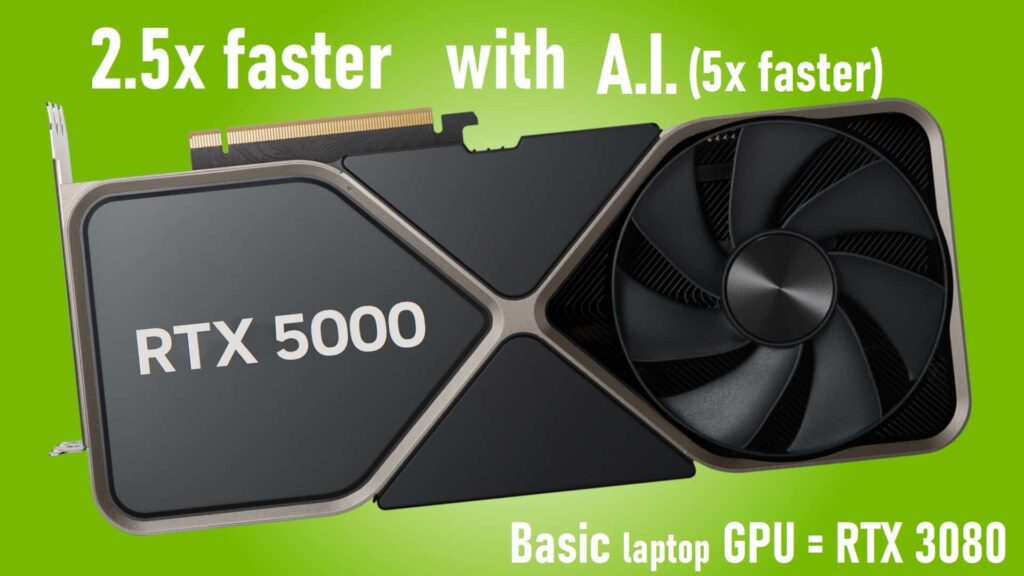Buckle up, tech enthusiasts! Today, we dive deep into the exciting realm of NVIDIA’s upcoming Blackwell architecture. Hold on tight as we explore specifications, design simulations, performance targets, and more. Keep in mind that this information is based on design simulations, so take it with a pinch of silicon salt.
Clock Frequencies: Reaching New Heights
Let’s kick things off with clock frequencies, a crucial aspect of any GPU. The grapevine suggests that Blackwell GPUs are eyeing a low to mid-3 gigahertz range when boosting. Of course, variations will exist among different SKUs, and external factors like case temperature and workload will influence the actual boost frequency. For instance, the RTX 490 is advertised to hit 2500 MHz but can surpass that under optimal conditions. The consensus is that low 3 GHz is a realistic target, showcasing NVIDIA’s commitment to pushing performance boundaries.
Performance Targets: Raster and Ray Tracing Domination
Now, the meaty part – performance targets. Brace yourself for the rollercoaster of information. Raster performance numbers indicate an impressive 60% improvement. This, however, refers to flagship parts against each other, such as the GB 202 versus A102. The SM (Streaming Multiprocessor) count for GB 202 stands at 192, a substantial but not groundbreaking increase. The real magic lies in clock frequency and architectural enhancements, propelling raster performance to new heights.
But hold on, the real star of the show is the Ray Tracing (RT) performance. Blackwell is targeting a jaw-dropping 2.5x increase in RT performance. Whether through some clever engineering or a genuine leap in technology, this ambitious goal reflects NVIDIA’s determination to make RT synonymous with gaming. Additionally, a 2x increase in compute performance adds to the overall allure.
Design Simulation: Monolithic Dies and Mixed GPC Approach
Now, let’s peek into the design simulation details. The flagship GB 202 boasts 192 SMs and a 384-bit memory bus. All Blackwell GPUs will be equipped with GDDR7, signaling a step forward in memory technology. Interestingly, GPC sizes come in two flavors: 12 SM and 8 SM. GB 202’s 16 GPCs align neatly with its 192 SMs, but things get intriguing with GB 207, featuring a mixed GPC approach of 8 + 8 + 12, totaling 28 GPCs. The math might seem quirky, but it reflects NVIDIA’s creative segmentation strategy.
Power Consumption and TDP: A Balancing Act
Power consumption is always a concern. While idle power consumption remains a potential challenge, the flagship’s under-load power consumption could reach up to 520 Watts, indicating a balancing act between raw power and efficiency. It’s worth noting that specifications, especially TDP, are subject to change, so stay tuned for updates.
Release Date: The Waiting Game
The release date, a topic that keeps us on the edge of our seats. One source insists on a release this year, but skepticism looms large. The more plausible scenario points to a 2025 release, possibly around Q2. This timing strategically places Blackwell between AMD’s RDNA 4 and RDNA 5 launches, setting the stage for an intriguing competition.
Future Possibilities: Refresh and MCM Considerations
As we gaze into the crystal ball, a potential refresh for Blackwell is in the cards. If it materializes, it could involve memory speed upgrades, adding an extra layer of competition with AMD’s RDNA 5. Additionally, a canceled MCM (Multi-Chip Module) variant hints at NVIDIA’s exploration of innovative designs. However, challenges like pricing and technical hurdles make MCM variants a complex endeavor.
Conclusion: A Thrilling Future for PC Gaming
In conclusion, the future of PC gaming is poised for excitement. NVIDIA’s Blackwell architecture promises significant leaps in performance, especially in Ray Tracing, challenging the boundaries of what’s possible. As we eagerly await official announcements and real-world benchmarks, the landscape of GPU competition is gearing up for a thrilling showdown between NVIDIA and AMD.
Get ready for a visual feast, as Blackwell aims to bring Ray Tracing into the mainstream, making it more accessible for a broader audience. With the PlayStation 6 also embracing these technologies, 2028 could mark a turning point where Ray Tracing becomes the norm rather than the exception.
As the tech saga unfolds, stay tuned for more updates, benchmarks, and the inevitable twists and turns in the ever-evolving world of graphics technology. The Blackwell architecture is set to leave an indelible mark, and we’re all aboard for the ride. Let the GPU wars continue, and may the frames be ever in your favor!




